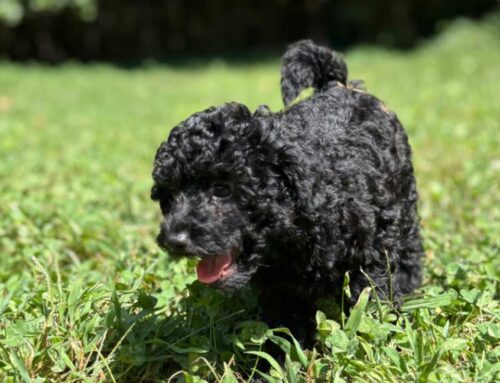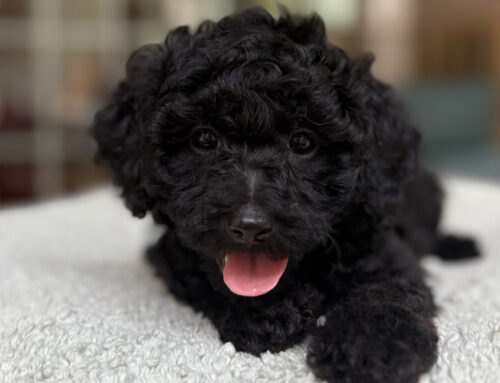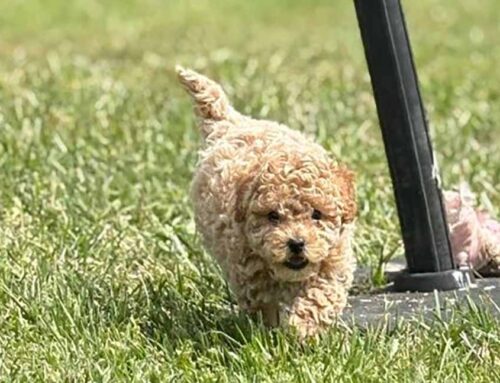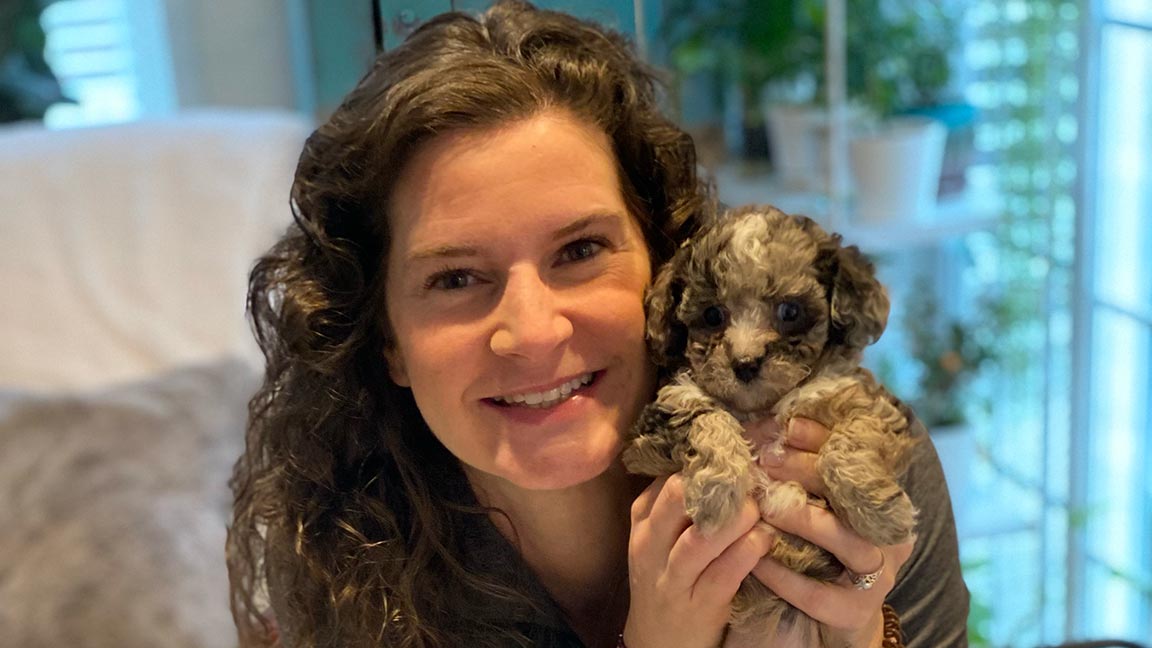
Why Does My Dog Lick So Much: Expert Breeder Guide
Picture this: you’re relaxing on the couch when your beloved Cavapoo approaches and begins an enthusiastic licking session that seems to go on forever. While those gentle kisses feel wonderful at first, you might start wondering “Why does my dog lick so much?”, especially when the behavior becomes persistent or excessive. As an ethical Cavapoo breeder at Jones Farm Puppies, I’ve witnessed countless families navigate this common concern, and I’m here to share the comprehensive insights you need.
Dogs communicate through licking as a natural behavior, but excessive licking often signals underlying issues that deserve attention. Unlike generic advice you’ll find elsewhere, this guide combines veterinary science with real breeding experience to help you understand your furry companion better. Through years of raising healthy Cavapoos in loving, clean environments and providing health guarantees to families, I’ve learned that understanding licking behavior starts with recognizing the unique traits inherited from both Cavalier King Charles Spaniels and Poodles.
This comprehensive guide will help you distinguish between normal affectionate licking and concerning excessive behavior, explore over fifteen specific reasons why dogs lick excessively, and discover prevention strategies that ethical breeders use to raise well-adjusted puppies. Whether you’re a current Cavapoo owner or considering adding one to your family, you’ll gain valuable insights that go far beyond surface-level explanations.
Understanding Dog Licking Behavior
What Is Normal Licking in Cavapoos?
Every dog owner needs to recognize the difference between healthy, natural licking and problematic, excessive behavior. Normal licking serves essential purposes in canine communication and self-care. Dogs naturally lick to show affection, explore their environment, groom themselves, and communicate with their human families. For Cavapoos specifically, this behavior often reflects the gentle, people-oriented nature inherited from their Cavalier King Charles Spaniel lineage, combined with the intelligence and sensitivity of their Poodle heritage.
Healthy licking typically occurs during specific situations: greeting family members, showing contentment after meals, occasional self-grooming, or seeking attention during play time. These episodes usually last a few minutes and stop naturally when the dog becomes engaged in other activities. The licking feels purposeful rather than compulsive, and your Cavapoo can easily redirect its attention when called.
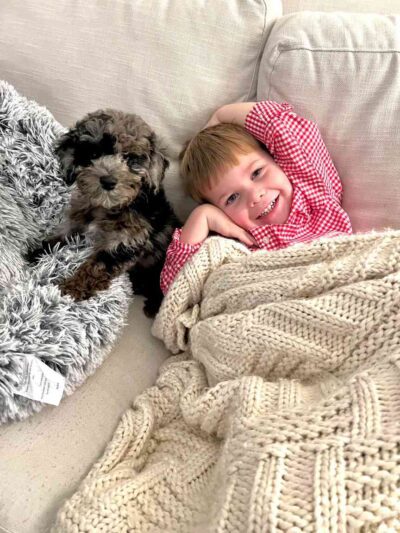
Recognizing Excessive Licking Patterns
Excessive licking, however, presents differently and requires attention. Warning signs include persistent licking that continues for extended periods, obsessive focus on specific body parts or surfaces, licking that creates raw or irritated skin, behavior that interferes with everyday activities like eating or sleeping, and licking that seems driven by anxiety or compulsion rather than affection.
Real Experience from Our Breeding Program
A few years ago, I noticed one of our adult dogs, Autumn, had developed an unusual licking pattern. Instead of her typical gentle greeting kisses, she began obsessively licking her front paws every evening. Initially, I thought this might be regular grooming, but the behavior persisted and intensified over several days. After consulting with our veterinarian and conducting thorough health testing, we discovered Autumn had developed a mild food sensitivity that was causing itchy paws. This experience taught me the importance of observing changes in licking patterns and addressing them promptly. Once we adjusted her diet and provided appropriate treatment, Autumn returned to her normal, affectionate licking behavior within two weeks.
Understanding these distinctions becomes especially important for Cavapoo owners because this breed’s intelligence and emotional sensitivity can make them more prone to developing anxiety-related behaviors, including excessive licking, when their needs aren’t adequately met.
Why Does My Dog Lick So Much? The Reasons
Understanding the question “Why does my dog lick so much?” requires examining both behavioral and medical factors that influence this complex behavior. Through years of breeding experience and working closely with veterinarians, I’ve identified numerous causes that can trigger excessive licking in Cavapoos and other breeds.
Behavioral Causes of Excessive Licking
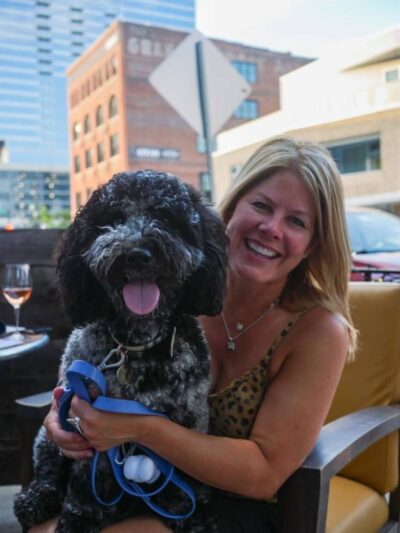
Affection and Bonding Behaviors
Cavapoos inherit strong bonding instincts from both parent breeds, making them naturally inclined to show affection through licking. This breed’s gentle nature and desire for human connection can sometimes manifest as persistent licking, especially when they’re seeking to strengthen their relationship with family members. The behavior often intensifies during quiet moments when your Cavapoo wants to express love and receive attention in return.
Attention-Seeking Strategies
Intelligent breeds like Cavapoos quickly learn that licking generates human responses. When your dog discovers that licking brings immediate attention, whether positive or negative, they may increase this behavior to maintain engagement. This becomes particularly common in households where the dog feels it’s not receiving adequate interaction throughout the day.
Anxiety and Stress Responses
Both Cavalier King Charles Spaniels and Poodles can be sensitive to environmental changes and emotional stress. Cavapoos may develop excessive licking as a self-soothing mechanism when experiencing separation anxiety, changes in routine, new environments, or household tension. The repetitive motion releases endorphins that help calm anxious feelings, creating a cycle where the dog relies on licking for emotional regulation.
Boredom and Mental Understimulation
Poodles contribute high intelligence to the Cavapoo mix, creating dogs that require substantial mental stimulation. When these needs aren’t met, excessive licking can develop as a displacement behavior. Dogs may lick themselves, furniture, or family members simply because they lack more appropriate outlets for their mental energy.
Habit Formation and Reinforcement
Sometimes, excessive licking begins for a legitimate reason but continues long after the original cause disappears. Dogs can develop habitual licking patterns that become deeply ingrained, especially when the behavior has been inadvertently reinforced through attention or comfort responses from their owners.
Taste Preferences and Sensory Seeking
Dogs possess incredibly sensitive taste receptors and may develop preferences for certain flavors found on human skin, furniture, or household surfaces. Salt from perspiration, lotions, food residues, or even cleaning products can attract persistent licking. Some dogs also engage in licking for the sensory experience itself, finding the texture and temperature stimulating.
Medical Causes of Excessive Licking
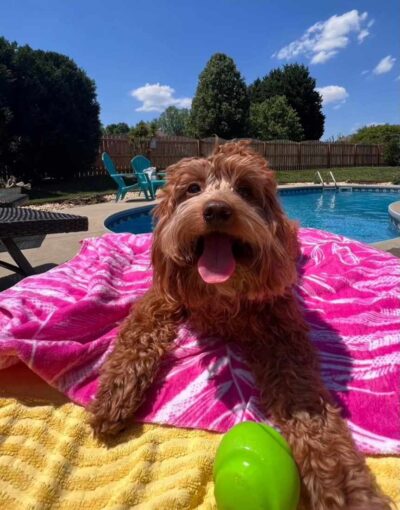
Allergic Reactions and Sensitivities
Environmental allergies to pollen, dust mites, mold, or household chemicals frequently cause itchy skin that triggers excessive licking. Food allergies can also manifest through skin irritation, particularly affecting paws, legs, and facial areas. Cavapoos may be predisposed to specific allergies inherited from their parent breeds, making this a common concern for owners.
Skin Conditions and Dermatological Issues
Various skin conditions, including bacterial infections, fungal overgrowth, eczema, and contact dermatitis, can create intense itching that drives compulsive licking. Hot spots, which are areas of inflamed and infected skin, often develop from excessive licking and create a painful cycle where the dog continues licking the irritated area.
Gastrointestinal Distress and Nausea
Research indicates that up to 60% of dogs with excessive licking behaviors suffer from underlying gastrointestinal issues. Nausea, acid reflux, stomach upset, or digestive discomfort can manifest as increased licking of surfaces, air licking, or excessive swallowing. This connection often surprises owners who don’t realize that stomach problems can cause licking behaviors.
Pain and Physical Discomfort
Dogs instinctively lick areas experiencing pain or discomfort, similar to how humans might rub a sore muscle. Arthritis, joint pain, muscle strains, or internal discomfort can all trigger localized licking. Older Cavapoos may develop age-related pain that manifests through increased licking of affected areas.
Dental Problems and Oral Pain
Toothaches, gum disease, oral infections, or foreign objects stuck in the mouth can cause dogs to lick excessively as they attempt to alleviate discomfort. Bad breath, difficulty eating, or pawing at the mouth often accompany licking when dental issues are the underlying cause.
Hormonal Imbalances
Thyroid disorders, Cushing’s disease, and other endocrine conditions can affect skin health and behavior patterns, potentially leading to excessive licking. These conditions often require blood testing for proper diagnosis and can significantly impact your dog’s overall well-being.
Parasitic Infections
Fleas, ticks, mites, and other parasites cause intense itching that drives persistent licking and scratching. Even after parasites are eliminated, the skin irritation they caused may continue triggering licking behaviors until properly treated.
Breed-Specific Factors in Cavapoos
Cavapoos inherit unique characteristics from both parent breeds that can influence licking behaviors. Cavalier King Charles Spaniels are known for their gentle, affectionate nature and can be prone to anxiety-related behaviors when not properly socialized. Poodles contribute intelligence and sensitivity that can manifest as heightened awareness of environmental changes and emotional states. This combination creates dogs that are both deeply bonded to their families and potentially more reactive to stress or changes in routine, making them susceptible to developing excessive licking as a coping mechanism.
Practical Solutions for Cavapoo Owners

Environmental Enrichment Strategies
When you notice your Cavapoo engaging in excessive licking, several practical strategies can help address the behavior while supporting your dog’s overall well-being. The key lies in identifying the underlying cause and implementing targeted solutions.
Environmental enrichment proves particularly effective for intelligent breeds like Cavapoos. Mental stimulation through puzzle toys, training sessions, and interactive games can redirect energy away from excessive licking. Physical exercise remains equally essential, as tired dogs are less likely to engage in problematic behaviors.
Consider these specific approaches:
- Rotate puzzle toys weekly to maintain novelty and engagement
- Establish consistent daily training sessions that challenge your dog’s intelligence
- Provide safe chew alternatives when you notice licking beginning
- Create designated quiet spaces where your dog can retreat when feeling overwhelmed
- Use food dispensing toys during meal times to extend eating duration and provide mental stimulation
Training Techniques for Cavapoos
Training techniques specific to Cavapoos should leverage their eagerness to please and high intelligence. Positive reinforcement works exceptionally well with this breed, as they respond enthusiastically to praise and treats. Redirect licking behaviors by teaching alternative commands like “settle” or “find your toy” that give your dog a specific action to perform instead of licking.
When to Consult Your Veterinarian
Veterinary consultation guidelines help determine when professional intervention becomes necessary. Schedule an appointment if licking persists despite behavioral modifications, creates physical damage to skin or surfaces, interferes with everyday activities like eating or sleeping, or accompanies other concerning symptoms like changes in appetite, energy levels, or bathroom habits.
Management Strategies by Cause
Management strategies for different causes require tailored approaches. For anxiety-related licking, focus on creating predictable routines and safe spaces. Address boredom through increased mental and physical stimulation. Medical causes require veterinary treatment of underlying conditions. Attention-seeking licking responds well to ignoring the behavior while rewarding calm, quiet interactions.
Professional Help Options
When to seek professional help includes situations where home management strategies prove insufficient. Professional dog trainers experienced with Cavapoos can provide specialized guidance, while veterinary behaviorists offer expertise in complex cases involving anxiety or compulsive disorders.
Conclusion: Raising Healthy, Happy Cavapoos
Understanding the question “Why does my dog lick so much?” requires recognizing the complex interplay between genetics, environment, health, and individual personality. As an ethical Cavapoo breeder committed to raising healthy puppies in loving environments, I’ve seen firsthand how proper breeding practices, health testing, and early socialization can prevent many licking-related issues before they develop.
The key to addressing excessive licking lies in patient observation, understanding your individual dog’s needs, and working with experienced professionals when necessary. Remember that every Cavapoo is unique, inheriting different combinations of traits from its Cavalier King Charles Spaniel and Poodle lineage. What works for one dog may require modification for another.
At Jones Farm Puppies, our commitment extends far beyond placing puppies in loving homes. We provide ongoing support, comprehensive health guarantees, and the peace of mind that comes from working with ethical breeders who prioritize the long-term health and happiness of every dog we raise.
When you choose a responsibly bred Cavapoo from health-tested parents raised in optimal conditions, you’re investing in a companion less likely to develop problematic behaviors like excessive licking.
If you’re considering adding a Cavapoo to your family or need guidance with your current companion’s licking behaviors, we’re here to help.
Frequently Asked Questions About Dog Licking Behavior
Why does my Cavapoo lick me more than other family members?
Cavapoos often develop stronger bonds with primary caregivers who spend the most time with them. Your dog may lick you more because you’re their primary source of food, exercise, and attention. This breed’s affectionate nature, inherited from Cavalier King Charles Spaniels, makes them exceptionally devoted to their favorite person. The behavior can also intensify if you respond positively to licking, inadvertently reinforcing the behavior through attention and interaction.
Is excessive licking more common in Cavapoos than in other breeds?
While excessive licking can occur in any breed, Cavapoos may be slightly more prone to this behavior due to their genetic makeup. The intelligence inherited from Poodles can lead to anxiety when mental stimulation needs aren’t met. At the same time, the sensitive nature from Cavalier King Charles Spaniels can make them more reactive to environmental changes. However, proper breeding practices, health testing, and early socialization significantly reduce these tendencies.
How can I tell if my dog’s licking is medical or behavioral?
Medical licking often targets specific body parts, leading to visible irritation or wounds, and may be accompanied by other symptoms such as changes in appetite, energy levels, or bathroom habits. Behavioral licking typically occurs during specific situations like greetings, attention seeking, or stress, and can usually be redirected with training. If you’re unsure, consult your veterinarian to rule out medical causes before addressing behavioral factors.
Can I train my Cavapoo to stop excessive licking?
Yes, Cavapoos respond well to positive reinforcement training due to their intelligence and eagerness to please. Teach alternative behaviors like “settle,” “find your toy,” or “go to your place” when licking begins. Reward calm, quiet behavior with treats and praise. Avoid punishing licking, as this can increase anxiety and worsen the behavior. Consistency and patience are key to successful training.
Why does my dog lick furniture and floors?
Surface licking often indicates gastrointestinal issues, with research showing up to 60% of dogs with this behavior have underlying stomach problems. It can also result from interesting scents, food residues, or cleaning product residues that attract your dog. Some dogs engage in surface licking due to anxiety or obsessive-compulsive behaviors. Consult your veterinarian if this behavior is frequent.
What role does diet play in excessive licking?
Diet can significantly impact licking behavior through food allergies, sensitivities, or nutritional imbalances. Common allergens include chicken, beef, dairy, wheat, and soy. Poor quality foods with artificial additives may also contribute to skin irritation and digestive issues that manifest as licking. Work with your veterinarian to identify potential food triggers and establish an appropriate diet for your Cavapoo’s specific needs.
How does spaying or neutering affect licking behavior?
Spaying and neutering can reduce some hormone-driven behaviors, including certain types of excessive licking related to stress or territorial marking. However, the procedure doesn’t directly address licking caused by medical issues, anxiety, or learned behaviors. The timing of spaying or neutering may also impact behavior, so discuss the optimal timing with your veterinarian based on your individual dog’s needs.
What’s the difference between grooming, licking, and excessive licking?
Normal grooming licking is brief, purposeful, and typically focuses on paws, legs, or genital areas. It occurs occasionally and stops naturally when the dog becomes engaged in other activities. Excessive licking is a persistent behavior that may create raw or irritated skin, focuses obsessively on specific areas, and interferes with everyday activities like eating, sleeping, or playing. The intensity and duration distinguish problematic licking from regular grooming.
How can I prevent licking problems in my new Cavapoo puppy?
Prevention starts with choosing a puppy from ethical breeders who conduct health testing and proper socialization. Establish consistent routines, provide adequate mental and physical stimulation, and address any behavioral concerns early. Regular veterinary checkups help identify potential health issues before they trigger licking behaviors. Early training and positive reinforcement help establish healthy behavioral patterns from the beginning.
Are there any natural remedies for excessive licking?
While natural approaches like increased exercise, mental stimulation, and stress reduction can help behavioral licking, medical causes require veterinary treatment. Some owners find success with calming supplements, but these should be used under veterinary guidance. Never rely solely on natural remedies for persistent licking, as underlying medical conditions need proper diagnosis and treatment to prevent complications.

